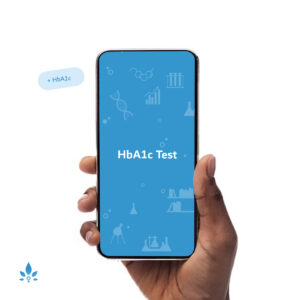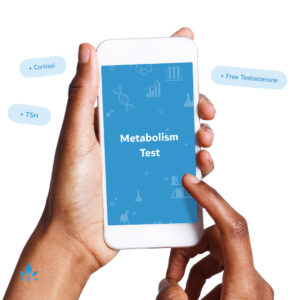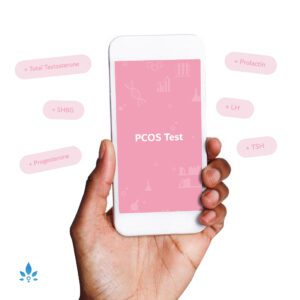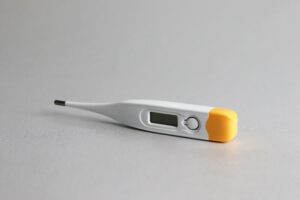What is Insulin Resistance?


Insulin resistance occurs when the body does not respond well to insulin. Insulin is a vital hormone, released by the pancreas in response to changing blood sugar levels. Left unmanaged, insulin resistance can develop into pre-diabetes, type 2 diabetes mellitus (T2DM) and gestational diabetes mellitus (GDM).
The normal role of insulin
Under normal conditions, the food that we eat is converted into blood sugar (glucose) and used by the cells of the body for energy. As glucose enters the bloodstream, the pancreas is triggered to release insulin. This insulin helps the body’s cells to take up glucose for energy; it also signals to the liver to store excess glucose for use later on. As glucose levels in the blood fall, signals are passed to the pancreas to release less insulin, thus, maintaining the status quo.
If cells stop responding to insulin, they become insulin resistant and blood sugar levels rise as a result. The pancreas produces more insulin in an attempt to compensate for the reduced response, so those who are insulin resistant usually have higher than normal levels of circulating insulin (hyperinsulinemia). High blood sugar levels can be dangerous and are a symptom of pre-diabetes.
Who is most at risk of becoming insulin resistant?
Whilst it is not fully understood what causes some people to become insulin resistant or pre-diabetic, there are factors that are known to increase the risk:
- Being overweight or obese.
- Being physically inactive.
- Consuming a high calorie diet.
- High blood pressure or cholesterol levels.
- Family history of insulin resistance and/or T2DM.
- History of gestational diabetes.
- Age. Those who are 45 and older are at higher risk.
- Ethnicity. Certain cultures are at greater risk of developing insulin resistance; for example, Asian Americans and African Americans.
- Endocrine disorders, for example, PCOS and Cushing’s Syndrome are strongly associated with insulin resistance.
Not everyone who is insulin resistant is obese, but many people are. Excess weight, particularly around the waist, leads to chronic inflammation, which is often a precursor to T2DM and cardiovascular disease.
How is insulin resistance diagnosed?
Identifying insulin resistance is not always easy, there are few symptoms and these are generally non-specific to the condition. Some patients may report lethargy, or a difficulty concentrating, or increased hunger. Physical symptoms in those who are pre-diabetic include acanthosis nigricans and skin tags.
There are no specific blood tests to check for insulin resistance. Most tests in clinical use will check for signs of pre-diabetes:
- Fasting plasma glucose. Measures glucose levels after fasting for 8 hours.
- Oral glucose tolerance test. Identifies how the body handles glucose after a meal.
- A1C test. Checks the average blood sugar levels over the previous 3 months.
Most people who are pre-diabetic will already have some insulin resistance.
Why is it so important to manage insulin resistance?
Those who are insulin resistant are at greater risk of developing pre-diabetes and T2DM. Those who are pre-diabetic have a 50% chance of developing T2DM within the next 5-10 years.
T2DM is a non-communicable disease. This means it cannot be caught, but develops over time, often as a result of poor lifestyle choices. With rising global obesity rates and an increase in sedentary lifestyles, the rates of T2DM will continue to rise and with that there will be an increase in the associated health complications that come with the disease. People with T2DM are at increased risk of cardiovascular disease, kidney disease, eye disease (retinopathy) and nerve damage leading to possible limb amputation.
The sooner a problem is identified and managed, the lower the chances of suffering the adverse health outcomes described above.
How to treat insulin resistance?
Physical activity and losing weight can help the body to respond better to insulin. If the cells of the body become more effective at absorbing blood sugar, less insulin will be required and the cells will become insulin sensitive rather than insulin resistant.
The National Institute of Health in the USA funded a Diabetes Prevention Study that ran over 15 years. They found that those who implemented lifestyle changes and lost between 5 and 7% of their starting body weight, significantly reduced their chances of developing T2DM.
Diabetes.co.uk suggests that adopting a low carbohydrate or ketogenic diet can also help to reduce the effects of insulin resistance.
Try Nabta’s metabolism test and get to learn more about your body.
Nabta is reshaping women’s healthcare. We support women with their personal health journeys, from everyday wellbeing to the uniquely female experiences of fertility, pregnancy, and menopause.
Get in touch if you have any questions about this article or any aspect of women’s health. We’re here for you.
Sources:
- Diabetes Prevention Program Research Group. “Long-Term Effects of Lifestyle Intervention or Metformin on Diabetes Development and Microvascular Complications over 15-Year Follow-up: the Diabetes Prevention Program Outcomes Study.” The Lancet Diabetes & Endocrinology, vol. 3, no. 11, 13 Sept. 2015, pp. 866–875., doi:10.1016/s2213-8587(15)00291-0.
- “Insulin Resistance & Prediabetes.” National Institute of Diabetes and Digestive and Kidney Diseases, U.S. Department of Health and Human Services, 1 May 2018, www.niddk.nih.gov/health-information/diabetes/overview/what-is-diabetes/prediabetes-insulin-resistance.
- “Insulin Resistance .” Diabetes.co.uk, 6 Mar. 2020, www.diabetes.co.uk/insulin-resistance.html.
- “Insulin Resistance and Diabetes.” Centers for Disease Control and Prevention, Centers for Disease Control and Prevention, 12 Aug. 2019, www.cdc.gov/diabetes/basics/insulin-resistance.html.













































